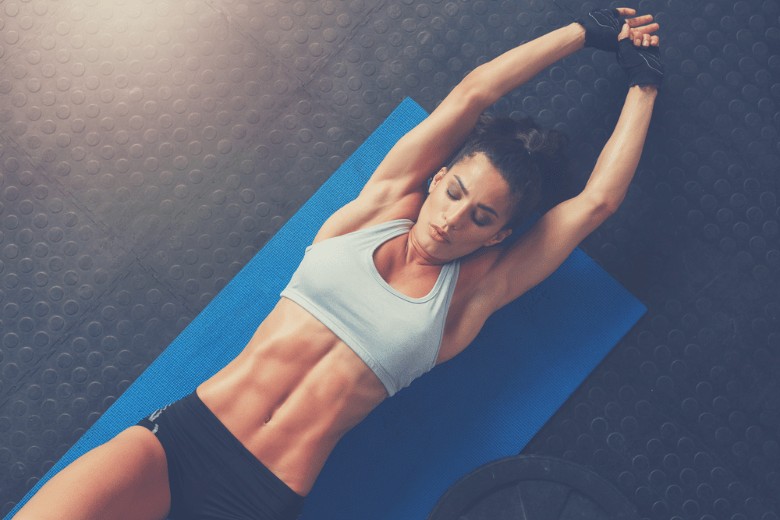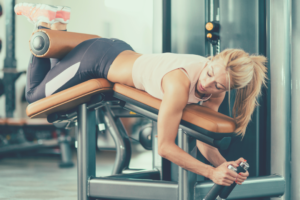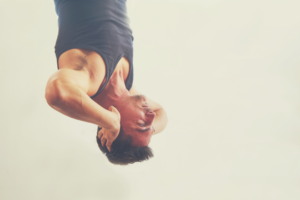In the past, I was very active.
Once I moved to the country, something changed.
I started gaining weight, my strength decreased and I was unhappy with the condition of my muscles.
I realized if I did not take action, my situation would continue to degenerate.
This was when I discovered strength training for rowers.
Importance of Fitness
The reason I became interested in strength training for rowers was that I wanted to substantially improve my physical fitness level and I lived right near a large lake.
You must be in good physical shape to become a rower.
In the beginning, I did okay, but I was not pleased with my overall performance.
As my physical fitness improved, I became stronger, my endurance increased and I noticed a definite improvement in my strokes.
I noticed a tremendous improvement in my skill and lost weight once I began aerobic endurance training.
This type of training is critical for rowers interested in racing.
You will need to maintain your level of intensity throughout the race to be successful. If you do not train properly, you will not have enough endurance to make it through until the end.
You also need to consider anaerobic fitness.
This is your power, strength and ability to maintain high force repeatedly until you complete your race.
You will require good flexibility and a low level of body fat.
I recommend consuming a healthy diet including fresh fruits and vegetables and rich in protein.
The closer you are to your ideal body weight, the easier rowing will become.
You need to develop an effective program focused on strength training for rowers and create an excellent plan.
You must adhere to your plan or you will not be successful.
Think about what you want to achieve, then set specific goals.
Every time I reached one of my goals I was elated and my desire to continue training increased.
Your plan should be customized to maximize your capabilities, endurance, and physical strength.
If you want to improve, you need to continually increase the physical load placed on your body.
As time passes, your fitness level will improve, you will reach all of your goals, and you will become an efficient and effective rower.
You must have the determination and the desire to continue. I found more effort was required in the beginning because I was out of shape.
The reason I succeeded was that I was willing to do everything necessary.
Strength training is essential for all serious rowers.
The Best Exercises For Serious Rowers
Front Squat
The best lifting exercise I discovered focused on strength training for rowers is the front squat.
Place your feet shoulder-width apart, use a cross or clean grip to hold your bar, stop your bar from slipping by keeping your elbows high and sit down straight with your thighs parallel to the floor.
Now use all of your power to stand straight up and into your original starting position.
To improve your rowing performance, use your shoulders to hold your bar as opposed to your back.
This is similar to a back squat.
To maintain an upright torso, you will need more strength in your core, quadriceps and back.
You will need to use all of these muscles for effective low splits.
The lower position is a lot like a rowing catch. You will build more strength for rowing than with a back squat.
Decreasing Injuries
If you are tall, it is much easier to reach a parallel depth using a front squat as opposed to a back squat.
During a front squat, your torso is in a more upright position.
This means the sheer force placed on your back is less than when performing a back squat. You will be able to help prevent injuries to one of the most commonly impacted areas.
You can decrease the strain placed on your torso by increasing the strength in your legs. The result is fewer injuries from rib stress and to your lower back while rowing.
Elevated Split Squat
One of the most effective ways to compensate for a muscular imbalance is by working each of your limbs separately.
You want both legs to be a contributing factor to your strokes and get a good stretch for your back legs.
You can use this exercise to improve your performance while helping to prevent injuries.
All of the work will be done using your front leg enabling your back leg to simply rest.
I realized I had a much harder time performing an elevated split squat with my left leg than my right.
I used my left leg first to perform as many reps as I could. I then did the same number using my right leg.
Eventually, my left leg became just as strong as my right. At this time I was able to gradually increase my number of reps.
You will build up your muscles and strength equally in both legs when embarking on a program focused on strength training for rowers.
There are numerous reasons your leg strength may not be equal when you begin. You will need equal power to become a good rower.
Decreasing Injuries
Performing flexible hip flexors will help you decrease injuries and pain in your lower back while improving your rowing performance.
Balanced quadriceps provide your body with the balance you need.
When your hips muscles and quadriceps are balanced, you decrease your risk of long-term injuries.
You will not be placing much pressure on your back while strengthening your quadriceps.
Romanian Deadlift
The Romanian version is simpler, eliminates starting position difficulty and enhances the best attributes of the traditional deadlift.
Begin the Romanian deadlift from the top position.
Make certain you brace your torso and bend your knees slightly for the correct hip hinge.
Your hips will continue pushing backward until your limit of flexibility is reached.
You can now change direction with your hips driven toward the bar in a forward and explosive motion.
You can accomplish this using a dumbbell, resistance band, barbell or kettlebell. This lift is excellent for both your flexibility and strength.
Your hamstrings will receive a deep stretch because your entire back will be working for the stabilization of your weight while controlling your descent.
The Romanian deadlift hip hinge is a lot like the motion you use to move out of your bow while recovering.
I had to practice this movement a lot because my posture during recovery was sadly lacking. I eventually built up rock-solid glutes, hamstrings, and back.
Decreasing Injuries
The traditional deadlift has a fixed height from the floor so it is ideal for a shorter height. If you are taller, you will have difficulties establishing an effective and safe starting position.
You may experience a nasty lower back sprain as a result. This risk is decreased with the Romanian version. You can remain healthy by increasing the strength of your posterior chain.
The majority of injuries are caused by imbalanced anterior glute and quadriceps muscles.
If you need to increase the flexibility of your hamstrings, this is an excellent exercise. Every time you enter the lowering repetition phase, you will be effectively stretching your hamstrings.
Core Exercises

Core exercises are a necessary part of strength training for rowers.
I prefer a combination of anti-flexion exercises such as the full tension plank and anti-rotation exercises including the Pallof Press.
I used these exercises when I first started training for muscular strength and core control. After this, my exercises became more complicated including plank exercises and variations.
I recommend starting with exercises moving your extremities and offering stability for your torso like the dead bug.
Your core is your abdominal and trunk muscles.
The kettlebell swing and Romanian deadlift are good exercises for effectively increasing the strength of your torso muscles. Your torso is critical for the power of your lower body.
A strong torso is necessary for all rowers including your posterior trunk extensor and anterior abdominal muscles.
You need strength to sit upright during your strokes for an effective force transfer from the footplate to the blade.
Decreasing Injuries
If you do not strengthen the muscles of your torso, the pressure on your legs will be unsustainable for your torso structure.
The pressure will go directly to your torso’s skeletal structures and place too much strain on your ribcage and spine.
The most expensive and common of all rowing injuries are injuries due to rib stress and pain in the lower back.
You can increase performance and decrease risk by improving the strength of your core.
Circuit Training
Strength training for rowers can include training circuits provided you do not use them for poor reasons or overdo them.
Once you understand how, when, and the type of circuit training effective for rowers, your training can be substantially improved.
You must have clear goals while circuit training with techniques to effectively work your stroke muscles while you are fatigued.
There are some issues involved with the way circuit training has been designed.
There are also several excellent solutions whether you are rowing for exercise, with your friends, or competing in races.
Everyone from novices to master rowers can benefit from circuit training.
If you use strength training circuits correctly to improve your rowing, you will also increase your overall athletic development.
Strength training circuits offer you earlier gains in strength and muscles, enhance your recovery and increase your mobility.
If you are a novice strength trainee or rower, you should not require much more in the way of a load to start your strength training.
Circuits are beneficial for developing an exercise program, increasing your athleticism, muscle hypertrophy, base strength, and muscular endurance.
Your circuit training program should be based on your level of fitness and personal goals.
Circuit training provides you with new ways to participate in different types of physical movements with the other members of your team.
Circuit training is extremely effective for beginner rowers as an advanced type of physical education.
Circuit training will enable you to participate in many different types of physical activities.
Traditional rowing practice means you must understand how to engage with the members of your team in a different manner.
If you use circuit training when under severe fatigue and only focus on the strength of your rowing muscles, it can go seriously wrong.
You must choose your exercises according to your physical fitness level and not by working harder than your muscles are currently capable of.
If you are only relying on your strongest muscles, you run the risk of creating faulty patterns of movement or making your muscle imbalances even worse.
If used correctly, circuit training will increase your strength, endurance, even out your musculature and improve your rowing.
If used incorrectly, circuit training can result in overtraining and injuries resulting from an excessive volume of training, straining your skeletal structures due to excess fatigue, and placing undesirable stress on your muscles already under pressure from your rowing training.
The result is an excess strain on your body and sloppy or uncoordinated movements.
Strength training for rowers is about the development of physical strength, endurance and assorted qualities imperative for rowing as safely and successfully as possible.
Specialized Training
Specialized training will help you develop explosive movements while increasing your strength when performing rowing patterns.
You need to make the most of short periods of time by ensuring you are combining specific exercises into a single movement.
Once you understand the basic fundamentals of rowing, you will be able to determine the best exercises and movements for your unique and individual needs.
You should always place your focus on quality as opposed to quantity.
I recommend beginning with light exercises and learning how to perform them correctly prior to progressing to more difficult exercises.
If you start with rowing exercises too advanced for your capabilities there is a good chance you will sustain an injury. Begin with a dynamic warm up followed by light mobility exercises.
An approach encompassing your entire body is necessary since rowers usually have tight lower backs and hips.
The idea is to move in a similar manner as athletes before competing as a rower. You will then increase your abilities, enhance your recovery and decrease your risk of injuries.
The Bottom Line
Rowing is not only a lot of fun but you will improve your overall fitness level and general health.
You need to have patience because time is necessary to develop your muscles, increase your endurance and strengthen your core.
You can improve your chance of success by setting goals or milestones.
The sense of achievement every time you reach one will enable you to keep going and succeed.
So start rowing and enjoy.



